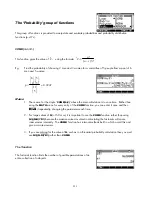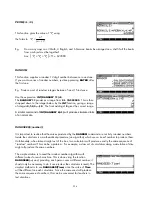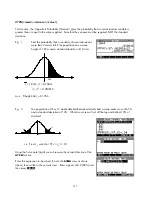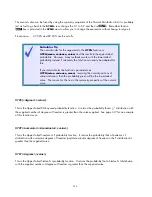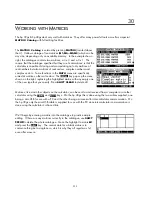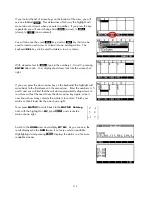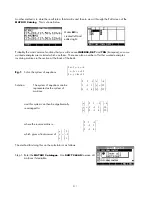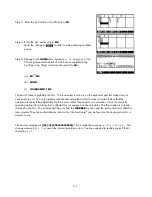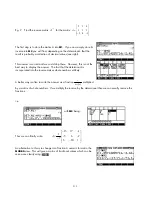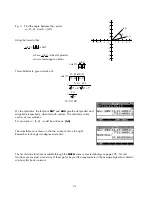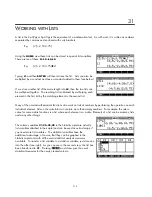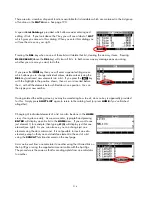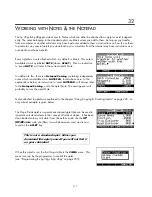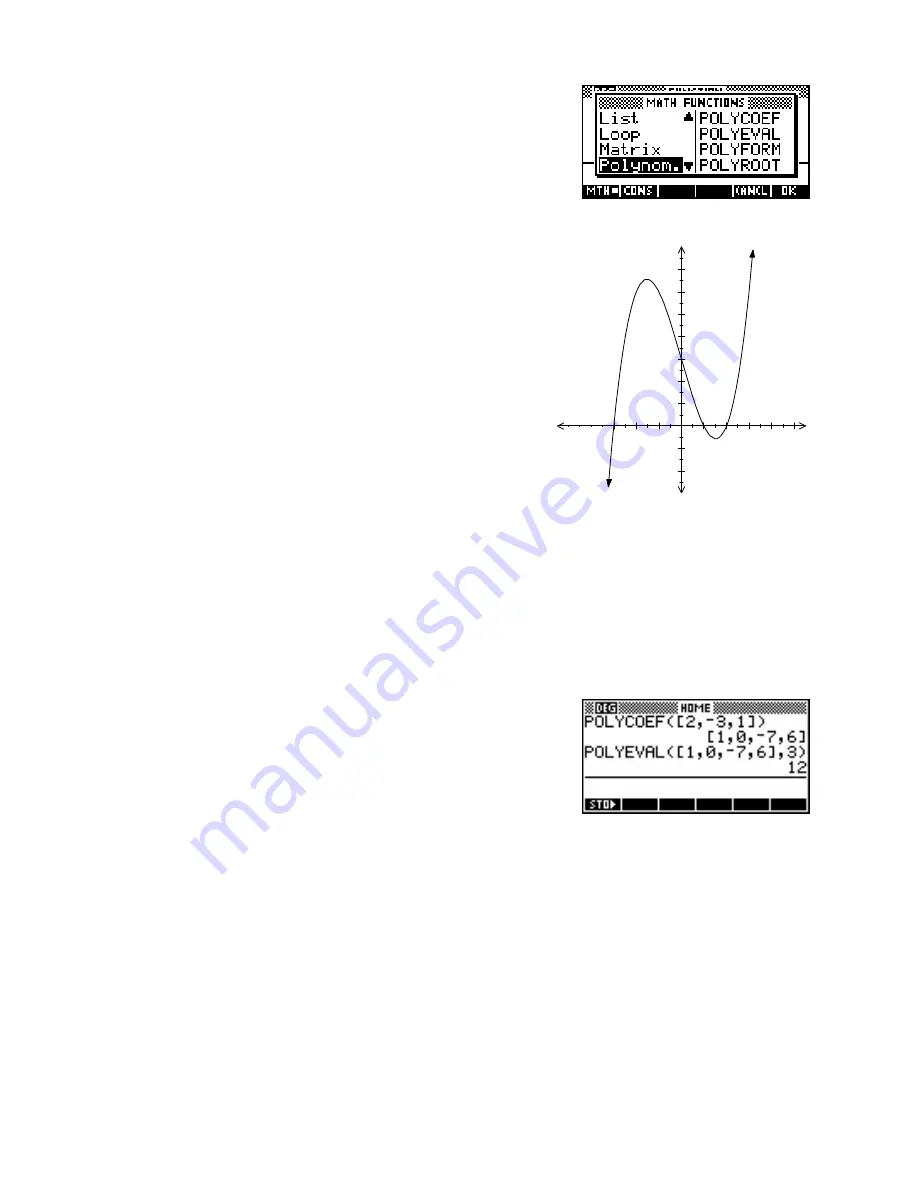
T
T
h
h
e
e
‘
‘
P
P
o
o
l
l
y
y
n
n
o
o
m
m
i
i
a
a
l
l
’
’
g
g
r
r
o
o
u
u
p
p
o
o
f
f
f
f
u
u
n
n
c
c
t
t
i
i
o
o
n
n
s
s
This group of functions is provided to manipulate polynomials.
We will use the function shown right to illustrate some of the tools in
the Polynomial group. Its equation is:
( )
=
−
2)(
x
+
3)(
x
−
1)
=
−
+
6
f x
(
x
x
3
7
x
f(x)
x
1
2
3
4
5
-1
-2
-3
2
4
6
8
10
12
14
-2
-4
-5
-4
POLYCOEF([root1,root2,…])
1
,
,
This function returns the coefficients of a polynomial with roots
x x x
3
,...
The roots must be supplied in
2
vector form means in square brackets.
The function
f x
above has roots 2, -3 and 1. The screen shot below shows
POLYCOEF
correctly giving
( )
the coefficients as 1, 0, -7 and 6 for a final polynomial of
f x
7
x
( )
=
x
3
−
+
6
.
POLYEVAL([coeff1,coeff2,…],value)
This function evaluates a polynomial with specified coefficients at the
point specified. The coefficients must be in square brackets, followed by
( )
x
3
7
x
the value of x (not in brackets). ie.
f x
=
−
+
6
has value 12
at x = 3.
Note:
This is a function that is aimed more at programmers. For normal users it is probably more efficient to
enter the function into the
SYMB
view of the Function aplet and then either use the
NUM
view to find
the function values required, or simply type
F1(3)
,
F1(-2)
etc. in the
HOME
view.
202


















